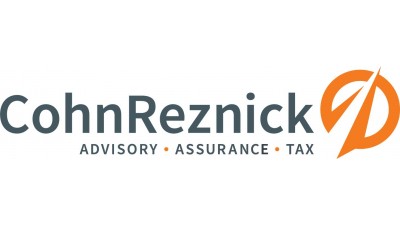Investors Bide Their Time With Opportunity Zones And Prepare For Increased Activity

America’s low-income, underinvested communities have recently become the focus of investors within commercial real estate. Opportunity zones have been the driving force behind this increased interest. With a tax deferral incentive built into the Tax Cuts and Jobs Act, the provision could help jump-start lagging economic activity in these communities and bring new businesses and development to struggling areas.
Opportunity zones have not come without questions. The fast deployment of the provision, combined with the ambiguity of certain requirements, has led investors to focus on planning for activity rather than immediately investing in opportunity zones.
“Many investors in the private sector and the government were unaware that opportunity zones existed as a way to defer capital gains and encourage economic development,” CohnReznick Managing Principal Ira Weinstein said. “There are still several requirements under the provision that need clarity, and so a lot of people are moving slowly.”
Opportunity zones have played a role in development incentive programs in the past, Weinstein said. The concept of identifying low-income or economically underperforming census tracts began as an idea put forth in a 2015 white paper from a D.C.-based think tank, Economic Innovation Group. Before the EIG study, Prime Minister Margaret Thatcher proposed a similar concept, called Enterprise Zones, in the U.K. during the 1980s, which President Ronald Reagan later adapted for the U.S. The idea is to fast-track economic growth in areas left behind in the recovery years following the Great Recession.
Under the TCJA, investors have the ability to place unrealized capital gains — and profit that has to be sold in return for cash — into a fund that then invests the capital into designated census tracts. The provision allows investors to defer capital gains tax incurred when selling projects. EIG found there is more than $6 trillion in unrealized capital gains in the economy that could go into opportunity zones.

Opportunity zones offer more than real estate investment. Funds can be applied to real estate and operating business activity. Entrepreneurs or tech companies that see potential in being in low-income communities and supporting economic growth in the area could also benefit from the provision. Opportunity zones can not only promote real estate development but also encourage the growth of the tenant population within that development, Weinstein said.
While the openness of the law encourages more people to consider putting capital into funds, many potential investors want more clarity on certain aspects of the provision. A Qualified Opportunity Zone Business under the TCJA, for instance, excludes businesses like a golf course or racetrack, and substantially all the tangible property owned and leased by the taxpayer must be a Qualified Opportunity Zone Business Property. The term “substantially all” is not defined in the provision. Other concerns include how long eligible capital can sit in an opportunity fund before it must be invested and whether capital can be reused in one opportunity fund through multiple investments.
Some investors are in a holding pattern until the government provides more clarity on the provision, Weinstein said. Several groups have formed funds and are raising capital, and other groups are currently more focused on business planning rather than investment.
“There is also this question of who is going to play what role in this ecosystem of opportunity zone activity,” Weinstein said. “Are there some people who are going to accumulate capital and make it available to fund managers who need to find deal flow? Or is it more likely that some folks will wear all hats?”
The provision does not limit which types of asset classes are preferred in opportunity funds, meaning developers and investors have an opportunity to take on more value-add assets, because of the greater tax deferral. While opportunity zones require some form of economic underpinnings to the asset, other necessary properties, like affordable housing, are also possible.
“There has to be diversity in asset class, an appetite for the investment opportunity and liquidity coming and going,” Weinstein said. “People with gains have to be comfortable investing and then on the back end, able to exit a fund to realize their tax benefits.”
Weinstein predicts investment in opportunity zones will pick up in Q4 and continue to pick up speed as investors identify capital and set up a deal flow. While the provision is time-sensitive, census tracts remain designated as opportunity zones for 10 years, and many people are waiting for activity to pick up before investing.
The hope from lawmakers is that as more capital flows into these communities, it will generate the momentum needed for greater development opportunities. With the initial investment in place, more people might follow, Weinstein said. Opportunity zones are a broad form of tax legislation, one that opens the door for a lot of creative investment opportunities.
“The provision is light on regulation,” Weinstein said. “People are excited about the fact that it doesn’t favor certain asset classes, it doesn’t enforce specific requirements. There are anti-abuse ideas and some guidelines on how people should operate their businesses, but there are no specific guideposts beyond that. So you are going to see significant diverse activity from different people and companies.”
This feature was produced in collaboration between Bisnow Branded Content and CohnReznick. Bisnow news staff was not involved in the production of this content.

